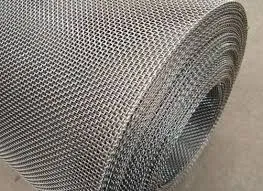-
+86 15030157877
-
sales@galvanizedmetalmesh.com
Nov . 09, 2024 19:31 Back to list
Innovative Designs Using Decorative Perforated Metal Panels for Modern Architecture and Interiors
The Versatility of Decorative Perforated Metal Panels An Overview
In contemporary architecture and design, decorative perforated metal panels have emerged as a popular choice for both functional and aesthetic applications. Their unique blend of practicality and style makes them an ideal solution for a wide range of projects, from facades and screens to interior design elements and furniture. This article explores the characteristics, benefits, and applications of decorative perforated metal panels, shedding light on why they have become a staple in modern design.
Defining Decorative Perforated Metal Panels
Decorative perforated metal panels are sheets of metal that have been punctured with a series of holes in various patterns and sizes. These panels can be produced from a variety of materials, including aluminum, stainless steel, and mild steel, allowing for customization to fit the specific needs of a project. The perforations not only add visual interest but also contribute to the overall aesthetic appeal of a space. Designers can choose from a multitude of patterns, whether geometric, organic, or custom designs, which can be used to create a stunning visual impact.
Benefits of Using Decorative Perforated Metal Panels
1. Aesthetic Appeal One of the primary advantages of decorative perforated metal panels is their ability to enhance the visual character of a building or space. They serve as a striking architectural feature that can transform a mundane area into an artistic statement.
2. Light and Air Flow The perforations allow natural light to filter through while maintaining a level of privacy. This characteristic makes them ideal for applications such as building facades, where light penetration is desired without compromising indoor privacy.
3. Temperature Control Perforated panels can help improve energy efficiency by providing ventilation. In outdoor applications, they can reduce heat buildup by allowing air to flow, making living spaces more comfortable in hot weather.
4. Durability and Low Maintenance Made from robust materials like stainless steel, decorative perforated metal panels are highly durable and resistant to environmental factors. They require minimal maintenance, making them a practical choice for long-term installations.
5. Sustainability Many manufacturers offer perforated metal panels made from recycled materials, contributing to sustainable building practices. Their long lifespan further supports the creation of environmentally friendly structures.
decorative perforated metal panels

Applications in Architecture and Design
Decorative perforated metal panels have a wide range of applications, making them a versatile choice for architects and designers. Here are some notable examples
- Building Facades They can be used as external cladding that not only beautifies a building but also enhances energy efficiency. The ability to design panels with varying degrees of transparency allows for unique visual effects.
- Privacy Screens In residential and commercial settings, perforated panels can function as effective privacy screens, allowing airflow and light while restricting sightlines.
- Interior Design Elements Inside, these panels can be incorporated into room dividers, ceiling treatments, and decorative wall coverings, adding texture and depth to interior spaces.
- Furniture Design Perforated metal can be utilized in modern furniture design, such as chairs, tables, and storage units, creating striking pieces that are both functional and visually appealing.
- Signage and Branding Custom perforated panels can be used in signage to convey a brand’s identity while complementing the architectural style of a building.
Conclusion
The versatility and aesthetic charm of decorative perforated metal panels position them as an integral component of modern architecture and design. Their ability to bridge the gap between functionality and artistic expression makes them an ideal choice for various applications, from exterior facades to interior furnishings. As sustainability and innovative design continue to be paramount in construction and architecture, these panels are likely to remain a favorite among architects, designers, and builders alike, fostering an environment where beauty and function coexist harmoniously.
-
Premium Welded Gabion Mesh | Robust & Eco-Friendly
NewsJul.31,2025
-
Premium Eco-Friendly Roof Tiles | Affordable & Durable
NewsJul.31,2025
-
Premium Roof Tiles for Durable & Stylish Roofing Solutions
NewsJul.30,2025
-
High-Quality Roof Tiles for Durable & Stylish Roofing Solutions
NewsJul.29,2025
-
High Quality Square Wire Mesh Manufacturer & Supplier for Wholesale
NewsJul.29,2025
-
Premium Roof Tiles for Durable & Stylish Roofing Solutions
NewsJul.29,2025



